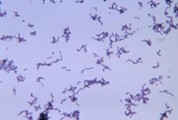Kristine Kucera, PA-C, MPAS, DHS
Update on Acne Treatment Guidelines
Acne Vulgaris is the most common skin condition in the US, affecting up to 50 million people annually. It usually begins in puberty and affects approximately 85% of adolescents and young adults but can occur at any stage of life. Acne is a chronic inflammatory skin disease with a multifactorial pathogenesis involving disordered keratinization, androgens—resulting in sebum overproduction, microbial colonization with Cutibacterium acnes, complex inflammatory mechanisms, and genetics.
In 2016, the American Academy of Dermatology published guidelines to addresses the management of adolescent and adult patients who present with acne vulgaris. Recently, a work group of experts was formed to update these guidelines to offer best practice recommendations and safety precautions for the therapies, treatments, and devices developed to treat acne. The goal is to cover all issues from dosing and monitoring established medication to exploring new antibiotics and addressing antibiotic stewardship. These updated guidelines are expected to be released in the fourth quarter of 2023.
With June designated as Acne awareness month, it may be a good time to review the current AAD guidelines for acne management.
Kristine Kucera, PA-C, MPAS, DHS, is Assistant Clinical Professor, University of Texas Southwestern, Medical Center PA Program, Dallas, TX. She is a member of the DEF Advisory Council.

DID YOU KNOW?
The switch from Propionibacterium acnes to Cutibacterium acnes took place in 2016 in response to findings from newer microbiological techniques that have refined species and subspecies differentiation. Cutibacterium is a new classification that includes five species, including C. acnes, the gram-positive organism associated with acne vulgaris.
DID YOU KNOW?
The switch from Propionibacterium acnes to Cutibacterium acnes took place in 2016 in response to findings from newer microbiological techniques that have refined species and subspecies differentiation. Cutibacterium is a new classification that includes five species, including C. acnes, the gram-positive organism associated with acne vulgaris.
The post Acne Guidelines appeared first on Dermatology Education Foundation.
